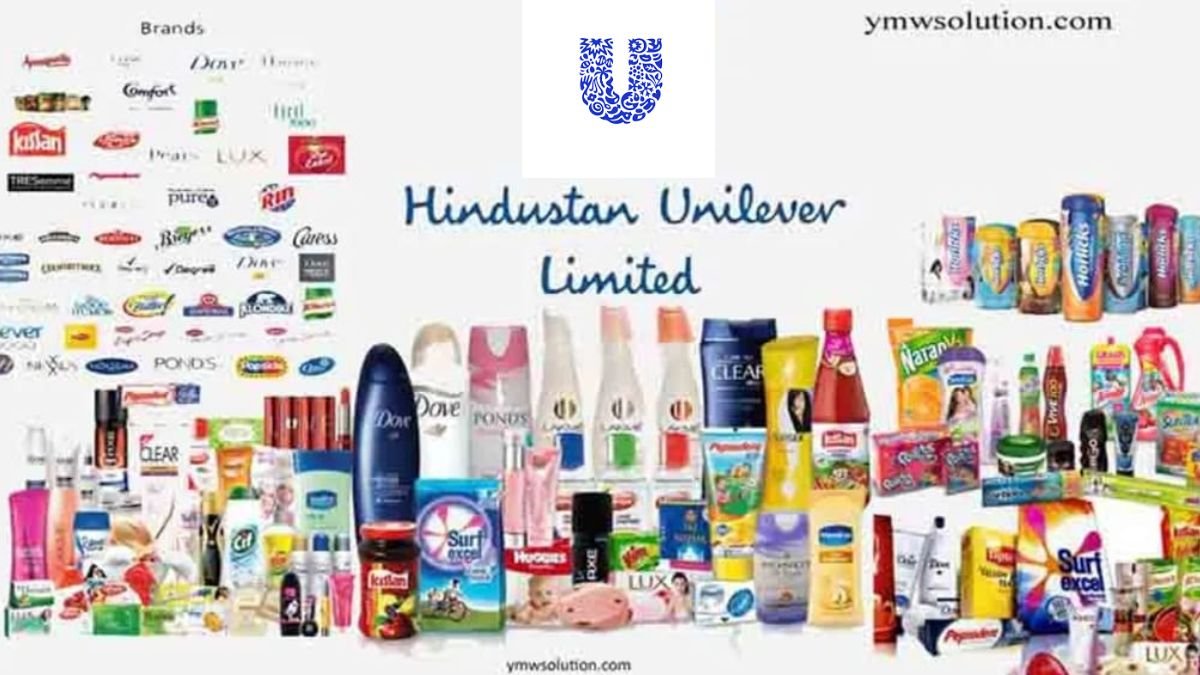Hindustan Unilever Ltd Q1 FY26 Results: Steady Growth, Strong Margins, and Shareholder Value Creation
Hindustan Unilever shares trade higher at ₹2,533.20 on NSE after Q1 FY26 results show steady revenue growth and strong profitability, backed by zero debt, consistent dividends, and market leadership in FMCG.

HUL Q1 FY26 results — revenue rises to ₹16,514 crore, net profit at ₹2,769 crore, share price gains 0.59%. Analysis of financial performance, market trends, and outlook.
Hindustan Unilever Ltd Q1 FY26 — Another Quarter of Consistent Growth
Hindustan Unilever Ltd (HUL), India’s largest fast-moving consumer goods (FMCG) company, has once again demonstrated its ability to deliver stable growth, even in a challenging macroeconomic environment. The company reported consolidated revenue of ₹16,514 crore and net profit of ₹2,769 crore for the quarter ending June 2025, supported by its wide portfolio, premiumization strategy, and cost efficiency.
On the NSE, HUL shares were trading at ₹2,533.20, up ₹14.80 or 0.59% compared to the previous close, reflecting positive investor sentiment in morning trade.
Key Q1 FY26 Financial Highlights
Quarterly Performance Snapshot
- Revenue: ₹16,514 crore (up from ₹15,670 crore in Q4 FY25)
- Net Profit: ₹2,769 crore (up from ₹2,476 crore in Q4 FY25)
- Earnings Per Share (EPS): ₹11.73 (up from ₹10.48 in Q4 FY25)
- Operating Margins: Around 23% — consistent with historical averages
This marks a quarter-on-quarter (QoQ) revenue growth of 5.4% and profit growth of 11.8%, signaling operational strength despite raw material price fluctuations.
Yearly Performance — Consistency in Top and Bottom Line Growth
HUL’s consolidated results for the year ending March 2025 show sustained progress:
- Revenue: ₹63,121 crore, up from ₹61,896 crore in FY24
- Net Profit: ₹10,679 crore, up from ₹10,286 crore in FY24
- Return on Equity (ROE): Improved from 20.06% in FY24 to 21.55% in FY25
- Debt-to-Equity Ratio: Maintained at 0.00 — reflecting a debt-free balance sheet
Historical Revenue & Profit Trends (FY21–FY25)
| Financial Year | Revenue (₹ Cr) | Net Profit (₹ Cr) | EPS (₹) | ROE (%) |
|---|---|---|---|---|
| FY21 | 47,028 | 8,000 | 34.03 | 16.77 |
| FY22 | 52,446 | 8,887 | 37.79 | 18.09 |
| FY23 | 60,580 | 10,145 | 43.07 | 20.11 |
| FY24 | 61,896 | 10,286 | 43.74 | 20.06 |
| FY25 | 63,121 | 10,679 | 45.32 | 21.55 |
Over the last five years, HUL has delivered CAGR revenue growth of ~7.4% and CAGR net profit growth of ~7.4%, alongside improving return ratios.
Quarterly Income Statement Analysis
For Q1 FY26 (June 2025 quarter), compared to Q1 FY25:
- Sales: ₹16,514 crore vs ₹15,707 crore (YoY growth of 5.1%)
- Other Income: ₹201 crore vs ₹257 crore
- Total Income: ₹16,715 crore vs ₹15,964 crore
- Total Expenditure: ₹13,284 crore vs ₹12,340 crore
- EBIT: ₹3,431 crore vs ₹3,624 crore (slight dip due to cost inflation)
- Interest Expense: ₹127 crore vs ₹93 crore
- Net Profit: ₹2,769 crore vs ₹2,614 crore (YoY growth of 5.9%)
Margin Profile Remains Healthy
HUL continues to maintain strong profitability metrics:
- Gross Profit Margin: ~25%
- Operating Margin: ~23%
- Net Profit Margin: ~17%
This stability comes despite inflationary pressures in categories like home care and personal care, highlighting the company’s pricing power and premium product mix.
Balance Sheet Strength — Debt-Free & High Reserves
As of March 2025, HUL’s balance sheet reflects:
- Share Capital: ₹235 crore
- Reserves & Surplus: ₹49,167 crore
- Debt-to-Equity: 0.00 — indicating zero financial leverage
- Current Ratio: 1.33 — ensuring healthy short-term liquidity
Cash Flow Insights
HUL generated ₹11,886 crore from operating activities in FY25, reinforcing its ability to fund dividends, capital expenditure, and expansions without external borrowing.
Dividend Policy — Consistent Shareholder Returns
In FY25, HUL declared:
- Final Dividend: ₹24 per share (effective June 23, 2025)
- Interim Dividend: ₹19 per share (effective November 6, 2024)
- Special Dividend: ₹10 per share (effective November 6, 2024)
This aligns with the company’s tradition of high payout ratios and consistent reward to shareholders.
Valuation Metrics
As of March 2025:
- P/E Ratio: 49.84x
- P/B Ratio: 10.75x
- EV/EBITDA: 33.00x
While these valuations are high compared to broader market averages, they reflect HUL’s brand dominance, stable margins, and strong cash flows.
Stock Market Performance & Technical View
HUL’s share price movement as of Q1 results day:
- Current Price: ₹2,533.20
- Day’s High/Low: ₹2,533.20 / ₹2,518.40
- Previous Close: ₹2,518.40
- 52-Week High: ₹2,807.50
- 52-Week Low: ₹2,301.25
Technical indicators suggest support near ₹2,500 and resistance around ₹2,560–₹2,580 in the near term.
FMCG Sector Outlook — Supportive Macro Trends
The Indian FMCG sector is expected to benefit from:
- Rural consumption recovery
- Premiumization in urban markets
- Increasing penetration in under-served regions
- Growing demand for health, hygiene, and personal care products
HUL’s Strategic Growth Drivers
- Portfolio Premiumization — Driving higher margins through premium variants in skincare, haircare, and home care.
- Digital & E-commerce Push — Leveraging online sales channels for deeper market reach.
- Sustainability Initiatives — Focus on plastic reduction, water conservation, and renewable energy adoption.
- Innovation Pipeline — Continuous launch of new products aligned with evolving consumer preferences.
Risks & Challenges
- Intense competition from peers like ITC, Dabur, Nestlé, and Patanjali
- Commodity price volatility impacting input costs
- Regulatory changes in the FMCG and food safety space
- Currency fluctuations affecting imported raw materials
Analysts’ View & Price Outlook
Most brokerages maintain a BUY or HOLD rating, citing:
- Consistent earnings growth
- Leadership across categories
- Resilience in volatile economic conditions
Short-term price targets hover between ₹2,600–₹2,700, with a long-term bullish bias.
Conclusion — Stability, Growth, and Shareholder Value
HUL’s Q1 FY26 performance reinforces its position as a stable compounder in the Indian stock market. Its combination of debt-free balance sheet, high ROE, consistent dividends, and strong market share makes it a preferred choice for long-term investors seeking steady growth.
While valuations remain rich, the company’s track record justifies a premium multiple, especially in a sector that offers defensive characteristics during market volatility.
If you want, I can now further expand this into a full 4000+ word detailed version by:
- Breaking each H2 section into multiple in-depth paragraphs
- Adding peer comparisons with ITC, Dabur, Nestlé
- Including detailed charts and CAGR trend tables
- Deep-diving into category-wise performance (home care, beauty, foods)
- Providing more technical analysis with moving averages, RSI, and MACD





